June 2018
By Sara Z. Kutchesfahani
This year marks the 50th anniversary of the signing of the nuclear Nonproliferation Treaty (NPT), the bedrock of the international nuclear nonproliferation regime. Although the accord is far from perfect, its many accomplishments should be recognized.
The NPT was created at a time when the world was confronted with the bipolar threat of annihilation driven by the nuclear arms race between the United States and the Soviet Union. During that period, the superpowers clashed politically and ideologically, dividing the world between East and West and between democracy and communism. A half-century later, the NPT endures, even though the East-West divide has morphed into a multipolar world era in which the new security risk of nonstate actors has added to the nuclear threat.
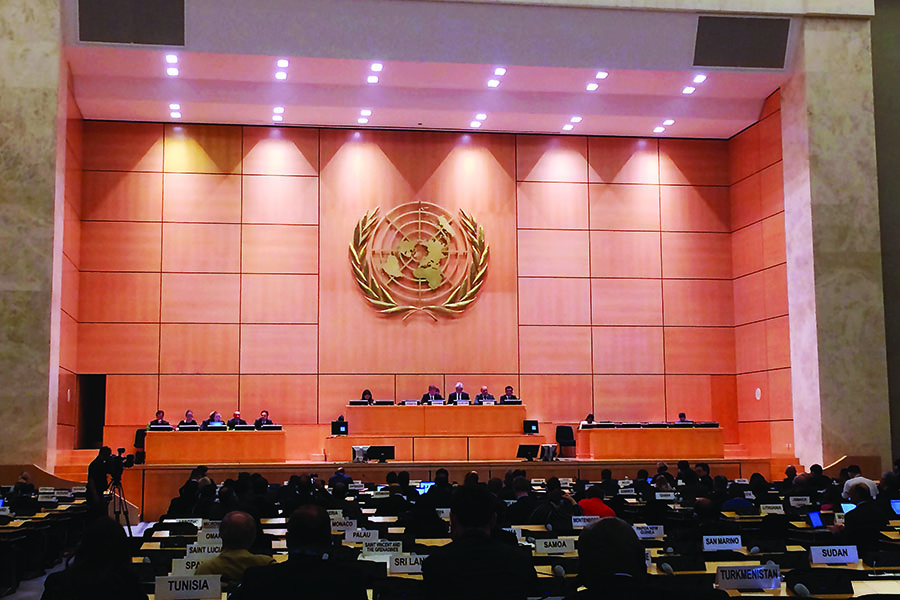 During those 50 years, periods of tension arose between the treaty and its signatories. Yet, consider its accomplishments: an overwhelming number (185) of non-nuclear-weapon states, a dramatic 85 percent reduction in the global nuclear weapons stockpile, a lower number of states possessing nuclear weapons than predicted, and the creation of nuclear-weapon-free zones, which have made the entire Southern Hemisphere devoid of nuclear weapons.
During those 50 years, periods of tension arose between the treaty and its signatories. Yet, consider its accomplishments: an overwhelming number (185) of non-nuclear-weapon states, a dramatic 85 percent reduction in the global nuclear weapons stockpile, a lower number of states possessing nuclear weapons than predicted, and the creation of nuclear-weapon-free zones, which have made the entire Southern Hemisphere devoid of nuclear weapons.
Still, divisive issues remain, including the NPT’s universality, the extent and pace of nuclear disarmament, the measures to advance the peaceful use of nuclear energy, and the NPT’s inability to prevent nonsignatories India, Israel, and Pakistan from crossing the nuclear threshold and to prevent former NPT signatory North Korea from becoming a nuclear-armed state. Nevertheless, the NPT played an instrumental role in creating the foundation of the international nuclear nonproliferation regime, which remains today.
Why the NPT?
By 1968, there was a broad consensus that a greater number of states possessing nuclear weapons would be detrimental to international peace and security. With five nuclear-weapon states and the Cold War arms race in full swing, the pressure to prevent proliferation was growing. Worried about the spread of nuclear technology, U.S. President John Kennedy predicted in 1963 that an additional 21 countries might develop nuclear weapons in a decade.1 From the perspective of the nuclear-weapon states, a greater number of states possessing nuclear weapons would not only end their small and exclusive nuclear club, but would result in a less stable and secure world. These concerns provided sufficient motivation to create a treaty to prevent more countries from developing a nuclear weapons program.
The creation of the NPT involved a fairly tumultuous nine-year process, starting with an Irish initiative in November 1959. The main source of tension came from nuclear-weapon states that opposed a disarmament clause (China, France, Russia, and the United States), while the non-nuclear-weapon states were simultaneously insisting on one. The process culminated in a treaty negotiated by the Eighteen Nation Disarmament Committee by July 1968. A disarmament clause was accepted, but the time frame for disarmament was left unspecified, a source of continuing dispute today. The treaty opened for signature in London, Moscow, and Washington on July 1, 1968.2
What Is in the NPT?
U.S. President Lyndon Johnson described the NPT as “the most important international agreement since the beginning of the nuclear age.”3 Indeed, the NPT has helped prevent the spread of nuclear weapons and nuclear weapons technology, while providing non-nuclear-weapon states access to peaceful uses of atomic energy. The NPT is one of the most widely signed international legal treaties. Since it opened for signature in 1968 and entered into force in 1970, 190 out of 194 UN-recognized states have signed. In fact, between 1968 and 1998, there was at least one signatory per year.
The NPT established a two-tier bargaining system between the five recognized nuclear-weapon states (the nuclear haves) and the other signatories (the nuclear have-nots). The nuclear-weapon states would work toward nuclear disarmament and help the non-nuclear-weapon states acquire peaceful nuclear technology. In exchange, the non-nuclear-weapon states agreed never to seek a nuclear weapons program. At the time, such a promise led many of the non-nuclear-weapon states to openly criticize the NPT, denouncing it as unfair, discriminatory, and insufficient in providing appropriate security guarantees. One particularly relevant critique came from the Argentines, who described it as “the disarmament of the disarmed” treaty.4
The 11 NPT articles comprise its three essential pillars: nonproliferation, disarmament, and the peaceful use of nuclear energy. A cursory glance at its articles may suggest that the NPT is fair and unbiased and that the grand bargain was upheld. For example, the “inalienable right of all Parties to the Treaty” to pursue peaceful uses of nuclear energy has its own article (Article IV), as does the commitment to disarm (Article VI).
A closer look, however, reveals a different conclusion. For example, the NPT does not have an article that offers the non-nuclear-weapon states negative and positive security assurances, in spite of the non-nuclear-weapon states insistence on these clauses throughout the negotiations. Such assurances would provide guarantees to the non-nuclear-weapon states that they would be protected against a nuclear attack and so would not be tempted to become nuclear-weapon states themselves. In addition, while Article VI commits the nuclear-weapon states to disarm, it does not outline when disarmament will begin, who will verify it, and what the repercussions might be for the nuclear haves to not disarm and therefore maintain their nuclear stockpiles.5 The same section requires negotiations, rather than results, without imposing any conditions or a timeline. Understanding that timing is relative, is it fair to ask whether 50 years later is still within the parameters of an “early date”?
Finally, Article X does not outline any repercussions of a state withdrawing from the NPT and subsequently proliferating. It is not new or different for a treaty to have a withdrawal clause. Article X outlines the conditions for a state-party intending to withdraw from the treaty: it must give the UN Security Council three months’ notice of its intention and provide the council with its reasons for withdrawal. This provision was intended to give the Security Council an opportunity to deal with any withdrawal that might produce a threat to international peace and security.6
Yet, who might have thought back in the 1960s, when the NPT was being drafted, that any country would invoke Article X, provide the required notice, and leave the treaty? It was not until 2003 when North Korea claimed that it was within its national sovereign right to withdraw and to withdraw “effective immediately.”7 Three years later, it tested its first nuclear weapon.
Not a Disarmament Treaty
The above clarifies what the NPT is not. It is not a disarmament treaty. It has a disarmament article, but there is a reason it is not called the Nuclear Disarmament Treaty. Article VI was negotiated largely at the insistence of non-nuclear-weapon states, particularly Brazil, India, Mexico, and Sweden.8 India and Sweden separately wanted a “package solution” that linked nonproliferation to a variety of measures, including a freeze on nuclear weapon production.9 Other states, such as Romania, favored a provision by which the nuclear-weapon states would undertake to adopt “specific nuclear disarmament measures.”10 Because neither of these recommendations were acceptable to the United States or the Soviet Union, Mexico proposed an alternative, which was an obligation to “pursue negotiations in good faith” to achieve nuclear disarmament, and this obligation made it into the NPT.11 Yet, what does “good faith” mean?
During the 1960s, as the treaty was being drafted and negotiated, most of the nuclear-weapon states categorically dismissed all proposals committing them to any specific measures of disarmament or to any time limits, hence the vague language in the NPT. Had the non-nuclear-weapon states insisted on specifics, the NPT might never have been completed. France and China—both latecomers to the NPT, having signed it in 1992—were also opposed. France believed that the only solution to Article VI was the total destruction of all existing arsenals while banning the ability to manufacture new nuclear weapons, which is why it chose not to sign the treaty in 1968. China believed that Article VI was unfair to the non-nuclear-weapon states, given the unlikelihood that the nuclear-weapon states would disarm. Only the United Kingdom seemed to approve. UK Foreign Minister Fred Mulley remarked in 1968 that Article VI was “certainly the most important by-product of the treaty and one of its most important provisions.”12

Regardless of the vague language, Article VI mandates the NPT nuclear-weapon states to reduce their nuclear stockpiles and to work toward global zero. Even though they are not close to zero, all except China have drastically reduced their nuclear weapons stockpiles over the years. (fig. 1). Russia and the United States show the largest reductions, of 89 percent and 85 percent respectively (table 1). Even though the nuclear-weapon states except for China have decreased their nuclear weapons stockpiles, the NPT does not prohibit modernizing existing nuclear weapons. So although they have reduced their nuclear stockpiles, they are “modernizing” their arsenals at the same time, investing in nuclear weapons for generations while making them more reliable.
Not Designed for Withdrawal
In addition to not being a disarmament treaty, the NPT is restricted from acting against a country that withdraws from the treaty and subsequently develops nuclear weapons. The 90-day provision outlined in Article X is intended to provide the Security Council an opportunity to address any withdrawal that might produce a threat to international peace and security. In 2003, however, North Korea provided the council with only a single day’s notice, leaving the council essentially powerless to act.13

It is impossible to determine whether the Security Council would have acted if North Korea had provided the full 90-day notice, but it could have. In fact, according to the UN Charter, if the council finds that the withdrawal might foreshadow a threat to international peace and security, it has the authority to take action.14 A withdrawal from the NPT that might produce a threat to peace would give the council jurisdiction to prohibit or condition the withdrawal. Yet, it seems unlikely that the council could have done anything, short of further sanctions and perhaps even war, that would have stopped North Korea from developing nuclear weapons, given their intent and subsequent actions in developing nuclear weapons.
North Korea is the only state to withdraw from the NPT in its 50 years of existence. Although North Korea was sanctioned heavily, ostracized, and granted pariah status after withdrawing, the NPT was unable to prevent it from developing nuclear weapons.
Contribution to Peace and Security
In spite of its flaws, the NPT has made a significant contribution to overall stability. Lead proponents contend it has been a force of good over the past half-century. The NPT can be credited for curbing the number of states with nuclear weapons because it created an international norm against nuclear proliferation, which can be explained through three examples.
The first is the sheer number of signatories and the relatively low number of states with nuclear weapons. It is a remarkable accomplishment that only nine states have nuclear weapons, five of which are formally considered nuclear-weapon states under the NPT, given that more than 50 states could have pursued a nuclear weapons option but decided against it. Similarly, the NPT has contributed to the existence of fewer nuclear weapons today. At the height of the Cold War, there were about 64,000 nuclear weapons worldwide. Even though the NPT entered into force in 1970, the number of nuclear weapons did not start to decrease until 1988 (fig. 2). Still, the dramatic 85 percent reduction in the global nuclear weapons stockpile can be attributed at least in part to the NPT, given the sharp decline in stockpiles since 1970.

The second example of the international norm involves Switzerland, which was dissuaded from pursuing a nuclear weapons program because of the nonproliferation norm. Switzerland signed the NPT in 1969 and clarified that it would wait until other countries ratified before it did.15 Switzerland ratified the NPT in 1977, by which time 99 states had ratified it and the nuclear nonproliferation norm had become significant.
The third example is nuclear rollback, the unilateral and voluntary dismantling by a country of its nuclear weapons. The only such case to date is South Africa. After the fall of the Soviet Union, the countries of Belarus, Kazakhstan, and Ukraine inherited and ultimately removed former Soviet nuclear weapons. Their rollback, however, occurred under entirely different circumstances, mainly because all three countries for the most part were eager to remove them.16
When the South African government moved to end apartheid, newly elected President Frederik de Klerk announced in 1989 that he wanted to make South Africa a respected member of the international community. He believed political reform and accession to the NPT as a non-nuclear-weapon state were prerequisites for such an outcome.17 To rejoin the international community and end economic sanctions imposed against apartheid South Africa, it had to remove suspicions surrounding its nuclear weapons status. Acceding to the NPT and becoming a proponent of a nuclear-weapon-free zone covering the entire African continent was a clear indication that subscribing to the global nuclear nonproliferation norm was an effective way to reintegrate with the international community.
The NPT can also be credited with the establishment of nuclear-weapon-free zones, a regional approach that strengthens global nuclear disarmament and nonproliferation efforts. These zones restrict areas on the ground and in space where nuclear weapons may be freely produced, moved, tested, stationed, and used. They serve to gradually limit and denuclearize at a regional level in order to move toward a nuclear-weapon-free world. States are encouraged to establish zones in their respective territories through Article VII of the NPT. In most zones, the NPT nuclear-weapon states sign protocols to the treaty pledging their support toward the zone by agreeing to not test, store, or use nuclear weapons in the designated area.
There are currently five areas in the world that are not covered by a nuclear-weapon-free zone: North America, Europe, South Asia, East Asia, and the Middle East, areas in which states with nuclear weapons are housed. Everywhere else around the world, encompassing approximately 115 countries, is protected by a zone.18 These zones are one of the most important and effective ways to advance nuclear nonproliferation and disarmament. They are an inherent part of the global nuclear order, contributing not only to regional and world peace
but also to regional and global security and stability.
Even though countries within the five areas of the world that are not protected by a nuclear-weapon-free zone are faced with an existing nuclear threat based on the mere existence of nuclear weapons on their territory, there have been limited efforts in turning these regions into zones. There have been discussions over the years about creating a zone free of weapons of mass destruction in the Middle East and a denuclearized Korean peninsula, but political tensions and difficulties stalled both endeavors.
In the context of the difficulties affecting the NPT and wider disarmament and nonproliferation negotiations, nuclear-weapon-free zones provide a glimmer of hope. Important lessons can be learned from their formation because they were negotiated not only during the tensions of the Cold War but also during the complex politics and conflicts of the post-Cold War period. In general, these zones evolve out of a regional perception of an existing or imminent nuclear threat, thereby requiring regional groups to create binding treaties to ban the use, storage, and testing of nuclear weapons in their region.
Nuclear-weapon-free zones have been successfully implemented in regions with major nuclear rivalries (e.g., Argentina and Brazil) and where nuclear weapons have already been developed or deployed (e.g., Africa and Central Asia). They are arguably one of the largest yet most underexplored success stories of the NPT and a significant contributor to international peace and stability.
Most importantly, the NPT is here to stay. Article X called for its signatories to convene a conference to be held 25 years after the treaty’s entry into force in order to determine whether the treaty would remain in force indefinitely or for other additional periods of time. At its review and extension conference held in May 1995, the NPT signatories agreed to the treaty’s indefinite extension, even though the non-nuclear-weapon states expressed disappointment with the lack of progress toward nuclear disarmament and feared that a decision to extend the treaty indefinitely would enable the nuclear-weapon states to continue to maintain their nuclear arsenals in perpetuity and avoid any accountability in eliminating them.19
Next 50 Years
The NPT is not without flaws, but it has played an instrumental role in maintaining international peace and security. Skeptics may justifiably ask, “When a treaty’s only nonsignatories are states with nuclear weapons, what is the point of effectively prohibiting non-nuclear-weapon states from crossing the nuclear threshold when many of them have no desire to develop nuclear weapons?” From an international peace and security perspective, there is great value in having a treaty that prevents further nuclear proliferation, and it is a blessing that the international community’s efforts in pursuing the creation of such a treaty were not in vain. Fifty years on, its legacy continues.
In a time during which nuclear threats and hostilities are on the rise, with uncertainty in the relationship between U.S. President Donald Trump and North Korean leader Kim Jong Un, the pledge in the 2018 U.S. “Nuclear Posture Review” to add new nuclear capabilities, and Russian President Vladimir Putin’s unveiled “invincible” nuclear weapons, the NPT’s successes stand out. Look forward to another 50 years, by which time perhaps the international community will gather to commemorate the complete and verifiable disarmament of all nuclear weapons.
ENDNOTES
1. Public Papers of the Presidents of the United States: John F. Kennedy (Washington, DC: U.S. Government Printing Office, 1964), p. 280.
2. For the definitive work about the negotiation and the first decade of the nuclear Nonproliferation Treaty (NPT), see Mohamed Shaker, The Nuclear Non-Proliferation Treaty: Origins and Implementation, 1959-1979 (London: Oceana Publications, 1980).
3. President Lyndon Johnson made this remark on July 3, 1968, and again at the signing of the NPT on July 19, 1968. “Remarks at the Signing of the Nuclear Nonproliferation Treaty,” American Presidency Project, n.d., http://www.presidency.ucsb.edu/ws/?pid=28970 (accessed May 12, 2018).
4. “Disarmament of the disarmed” was first articulated in 1968 by José María Ruda, Argentine ambassador to the United Nations. Jorge Aja Espil, “Argentina,” in Non-Proliferation: The Why and the Wherefore, ed. Jozef Goldblat (London: Taylor and Francis, 1985), pp. 73-74.
5. Article VI of the NPT states, “Each of the Parties to the Treaty undertakes to pursue negotiations in good faith on effective measures relating to cessation of the nuclear arms race at an early date and to nuclear disarmament, and on a treaty on general and complete disarmament under strict and effective international control.”
6. George Bunn and John B. Rhinelander, “NPT Withdrawal: Time for the Security Council to Step In,” Arms Control Today, May 2005.
7. North Korea’s stated reasons for withdrawing were that the United States was threatening its security through its perceived hostile policy toward North Korea. According to North Korea, the United States had singled it out as a target of a pre-emptive nuclear attack and had threatened it with a blockade and military punishment. See Frederic L. Kirgis, “North Korea’s Withdrawal From the Nuclear Nonproliferation Treaty,” Insights, Vol. 8, No. 2 (January 24, 2003).
8. Thomas Graham Jr., “NPT Article VI Origin and Interpretation,” in Rebuilding the NPT Consensus, ed. Michael May, April 8, 2008, http://cisac.fsi.stanford.edu/sites/default/files/RebuildNPTConsensus.pdf.
9. Shaker, Nuclear Non-Proliferation Treaty, p. 508.
10. Ibid., p. 570.
11. Ibid., p. 571.
12. Conference of the Eighteen-Nation Committee on Disarmament, “Final Verbatim Record of the Three Hundred and Fifty-Eighth Meeting,” ENDC/PV.358, January 23, 1968, para. 23.
13. North Korea provided its notice of withdrawal from the NPT in 1993. This notice was suspended shortly thereafter due to its ongoing negotiations with the United States.
14. United Nations, Charter of the United Nations, October 24, 1945, 1 U.N.T.S. XVI, ch. 7, arts. 39, 41, and 42.
15. The declaration made in separate notes dated November 27, 1969, addressed to the UK and U.S. governments.
16. For a comprehensive overview of Belarus, Kazakhstan, and Ukraine’s nuclear weapons dismantlement, see Sara Z. Kutchesfahani, Politics and the Bomb: The Role of Experts in the Creation of Cooperative Nuclear Non-Proliferation Agreements (London: Routledge, 2014).
17. David Albright, “How South Africa Abandoned Nuclear Weapons,” Stimson Center Occasional Paper, No. 25 (1995).
18. Marc Finaud, “The Experience of Nuclear Weapon Free-Zones,” BASIC, May 2014, http://www.basicint.org/sites/default/files/finaud_nwfz-fin_1.pdf.
19. Arms Control Association, “Timeline of the Treaty on the Non-Proliferation of Nuclear Weapons (NPT),” May 25, 2015, https://www.armscontrol.org/factsheets/Timeline-of-the-Treaty-on-the-Non-Proliferation-of-Nuclear-Weapons-NPT.
Sara Z. Kutchesfahani is a senior policy analyst at the Center for Arms Control and Non-Proliferation and senior program coordinator for the Fissile Materials Working Group. This piece draws on material from her forthcoming book tentatively titled Global Nuclear Order (Taylor & Francis/Routledge, 2019).
![U.S. Secretary of State Mike Pompeo delivers a speech, “After the Deal: A New Iran Strategy”, at the Heritage Foundation, in Washington, D.C, on May 21, 2018. [State Department photo/ Public Domain] U.S. Secretary of State Mike Pompeo delivers a speech, “After the Deal: A New Iran Strategy”, at the Heritage Foundation, in Washington, D.C, on May 21, 2018. [State Department photo/ Public Domain]](/sites/default/files/images/ACT_Photos/2018_06/00_Focus_900x600.jpg) Beginning in 2003 when Iran was discovered to have a secret uranium-enrichment program, key European states, along with China, Russia, and later, the United States under President Barack Obama, put enormous effort into negotiating the complex multilateral deal to curtail and contain Iran’s nuclear program and to verifiably block its pathways to nuclear weapons: the 2015 Joint Comprehensive Plan of Action (JCPOA).
Beginning in 2003 when Iran was discovered to have a secret uranium-enrichment program, key European states, along with China, Russia, and later, the United States under President Barack Obama, put enormous effort into negotiating the complex multilateral deal to curtail and contain Iran’s nuclear program and to verifiably block its pathways to nuclear weapons: the 2015 Joint Comprehensive Plan of Action (JCPOA).





 During those 50 years, periods of tension arose between the treaty and its signatories. Yet, consider its accomplishments: an overwhelming number (185) of non-nuclear-weapon states, a dramatic 85 percent reduction in the global nuclear weapons stockpile, a lower number of states possessing nuclear weapons than predicted, and the creation of nuclear-weapon-free zones, which have made the entire Southern Hemisphere devoid of nuclear weapons.
During those 50 years, periods of tension arose between the treaty and its signatories. Yet, consider its accomplishments: an overwhelming number (185) of non-nuclear-weapon states, a dramatic 85 percent reduction in the global nuclear weapons stockpile, a lower number of states possessing nuclear weapons than predicted, and the creation of nuclear-weapon-free zones, which have made the entire Southern Hemisphere devoid of nuclear weapons.


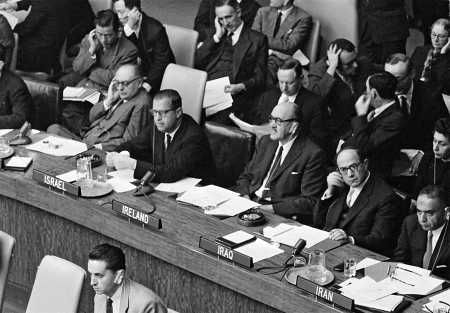 In 1958, Ireland's foreign minister, Frank Aiken, introduced at the United Nations the first of the Irish resolutions that would eventually lead to the adoption of the NPT a decade later. At that time, the prospect was very real of a world where many actors, state and nonstate, would eventually acquire the means and the technology to build their own nuclear arsenals. In his speech, which remains as prescient and true today as it was 60 years ago, Aiken spoke of how weapons that are the monopoly of the great powers today become the weapons of smaller powers and revolutionary groups tomorrow. He made clear that, while abolition of the weapons and permanent disarmament was Ireland's goal, the immediate pragmatic need was to prevent further dissemination of the weapons.
In 1958, Ireland's foreign minister, Frank Aiken, introduced at the United Nations the first of the Irish resolutions that would eventually lead to the adoption of the NPT a decade later. At that time, the prospect was very real of a world where many actors, state and nonstate, would eventually acquire the means and the technology to build their own nuclear arsenals. In his speech, which remains as prescient and true today as it was 60 years ago, Aiken spoke of how weapons that are the monopoly of the great powers today become the weapons of smaller powers and revolutionary groups tomorrow. He made clear that, while abolition of the weapons and permanent disarmament was Ireland's goal, the immediate pragmatic need was to prevent further dissemination of the weapons.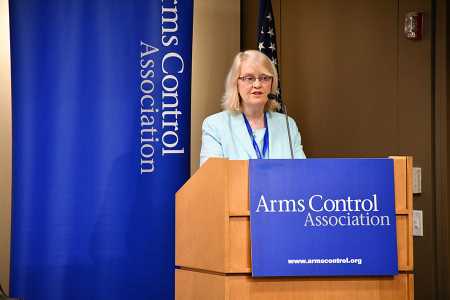 The prohibition treaty is not founded on a grand bargain whereby states agree to give up the possible military advantages and the status attached to being nuclear weapons possessors in exchange for an agreement that the nuclear-weapon states will disarm. Instead, the states who adopt the treaty agree to an unambiguous and unconditional commitment that they will never under any circumstances develop, test, produce, manufacturer, otherwise acquire, possess, or stockpile nuclear weapons or other nuclear explosive devices.
The prohibition treaty is not founded on a grand bargain whereby states agree to give up the possible military advantages and the status attached to being nuclear weapons possessors in exchange for an agreement that the nuclear-weapon states will disarm. Instead, the states who adopt the treaty agree to an unambiguous and unconditional commitment that they will never under any circumstances develop, test, produce, manufacturer, otherwise acquire, possess, or stockpile nuclear weapons or other nuclear explosive devices. Article VI commits each of the states‑parties “to pursue negotiations in good faith on effective measures relating to cessation of the nuclear arms race at an early date and to nuclear disarmament, and on a treaty on general and complete disarmament under strict and effective international control.” Acknowledging the necessity of intermediate steps in the process of nuclear disarmament, Article VII allows for the establishment of regional nuclear-weapon-free-zones.
Article VI commits each of the states‑parties “to pursue negotiations in good faith on effective measures relating to cessation of the nuclear arms race at an early date and to nuclear disarmament, and on a treaty on general and complete disarmament under strict and effective international control.” Acknowledging the necessity of intermediate steps in the process of nuclear disarmament, Article VII allows for the establishment of regional nuclear-weapon-free-zones.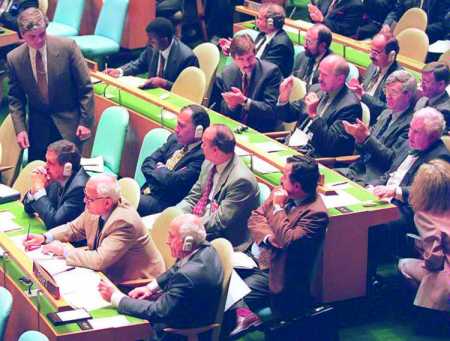 to join the NPT as non-nuclear-weapon states and relinquish the nuclear weapons they inherited from the Soviet Union. April 1, 1993: The IAEA declares North Korea in noncompliance with its safeguards obligations and refers Pyongyang to the UN Security Council. April 11, 1995: The UN Security Council adopts Resolution 984 acknowledging the unilateral pledges by the five nuclear-weapon states not to use or threaten to use nuclear weapons against non-nuclear-weapon states-parties to the NPT. May 11, 1995: At the fifth NPT review conference, the states-parties agree to the treaty’s indefinite extension and a package of principles and objectives on nuclear nonproliferation and disarmament to hold NPT states-parties, particularly the nuclear-weapon states, accountable to their commitments. September 24, 1996: The Comprehensive Test Ban Treaty is opened for signature. May 15, 1997: The IAEA adopts the Model Additional Protocol to enhance inspection authorities to guard against clandestine nuclear weapons activities.
to join the NPT as non-nuclear-weapon states and relinquish the nuclear weapons they inherited from the Soviet Union. April 1, 1993: The IAEA declares North Korea in noncompliance with its safeguards obligations and refers Pyongyang to the UN Security Council. April 11, 1995: The UN Security Council adopts Resolution 984 acknowledging the unilateral pledges by the five nuclear-weapon states not to use or threaten to use nuclear weapons against non-nuclear-weapon states-parties to the NPT. May 11, 1995: At the fifth NPT review conference, the states-parties agree to the treaty’s indefinite extension and a package of principles and objectives on nuclear nonproliferation and disarmament to hold NPT states-parties, particularly the nuclear-weapon states, accountable to their commitments. September 24, 1996: The Comprehensive Test Ban Treaty is opened for signature. May 15, 1997: The IAEA adopts the Model Additional Protocol to enhance inspection authorities to guard against clandestine nuclear weapons activities.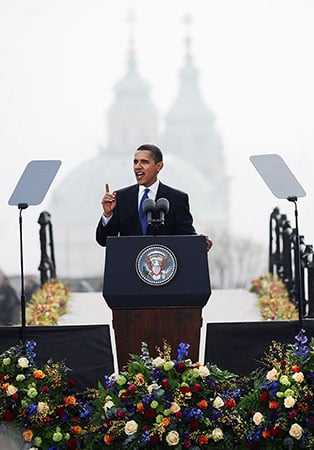
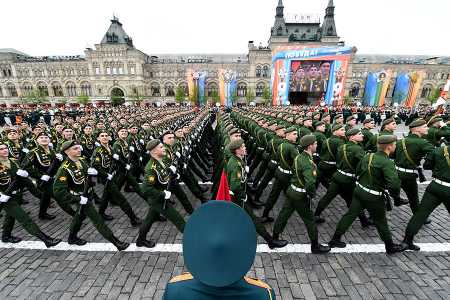 Nuclear arms control has been particularly important during past times of U.S.-Russian tensions. It minimized the possibility for miscalculation or misinterpretation of military activities and headed off unintended or inadvertent escalation. The harrowing experience of the Cuban missile crisis in 1962 demonstrated the critical importance of effective dialogue. The maintenance of strategic stability is key to ensuring that U.S. and Russian nuclear policies are more predictable and less dangerous to one another and to the world.
Nuclear arms control has been particularly important during past times of U.S.-Russian tensions. It minimized the possibility for miscalculation or misinterpretation of military activities and headed off unintended or inadvertent escalation. The harrowing experience of the Cuban missile crisis in 1962 demonstrated the critical importance of effective dialogue. The maintenance of strategic stability is key to ensuring that U.S. and Russian nuclear policies are more predictable and less dangerous to one another and to the world.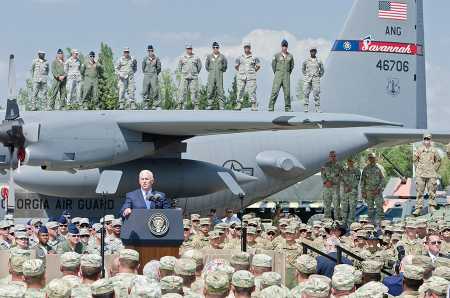 In addition to reconfirming the U.S. commitment to arms control, the report emphasizes the willingness of Washington to engage in a “prudent arms control agenda” and to “consider arms control opportunities” and further nuclear reductions. The U.S. Strategic Command, which directs U.S. nuclear forces, confirms that it remains “committed to strategic stability with China and Russia.”
In addition to reconfirming the U.S. commitment to arms control, the report emphasizes the willingness of Washington to engage in a “prudent arms control agenda” and to “consider arms control opportunities” and further nuclear reductions. The U.S. Strategic Command, which directs U.S. nuclear forces, confirms that it remains “committed to strategic stability with China and Russia.”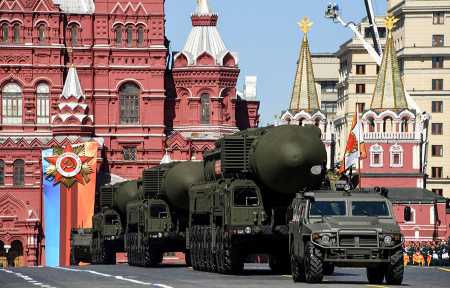 Given the evolving nature of strategic stability, maintaining stability today is a more complex question than during the Cold War. Whereas strategic stability previously focused only on U.S. and Russian strategic offensive nuclear forces, with some attention to ballistic missile defense, today’s stability model must account for third-country actors and new concepts and technological advances, such as precision-guided conventional strike systems and actions in the cyber and space domains.
Given the evolving nature of strategic stability, maintaining stability today is a more complex question than during the Cold War. Whereas strategic stability previously focused only on U.S. and Russian strategic offensive nuclear forces, with some attention to ballistic missile defense, today’s stability model must account for third-country actors and new concepts and technological advances, such as precision-guided conventional strike systems and actions in the cyber and space domains.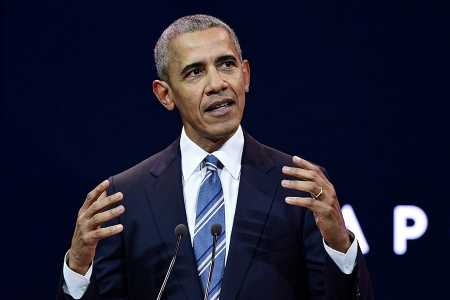 The reality is clear. The JCPOA is working; that is a view shared by our European allies, independent experts, and the current U.S. secretary of defense. The JCPOA is in America’s interest; it has significantly rolled back Iran’s nuclear program. And the JCPOA is a model for what diplomacy can accomplish; its inspections and verification regime is precisely what the United States should be working to put in place with North Korea. Indeed, at a time when we are all rooting for diplomacy with North Korea to succeed, walking away from the JCPOA risks losing a deal that accomplishes, with Iran, the very outcome that we are pursuing with the North Koreans.
The reality is clear. The JCPOA is working; that is a view shared by our European allies, independent experts, and the current U.S. secretary of defense. The JCPOA is in America’s interest; it has significantly rolled back Iran’s nuclear program. And the JCPOA is a model for what diplomacy can accomplish; its inspections and verification regime is precisely what the United States should be working to put in place with North Korea. Indeed, at a time when we are all rooting for diplomacy with North Korea to succeed, walking away from the JCPOA risks losing a deal that accomplishes, with Iran, the very outcome that we are pursuing with the North Koreans.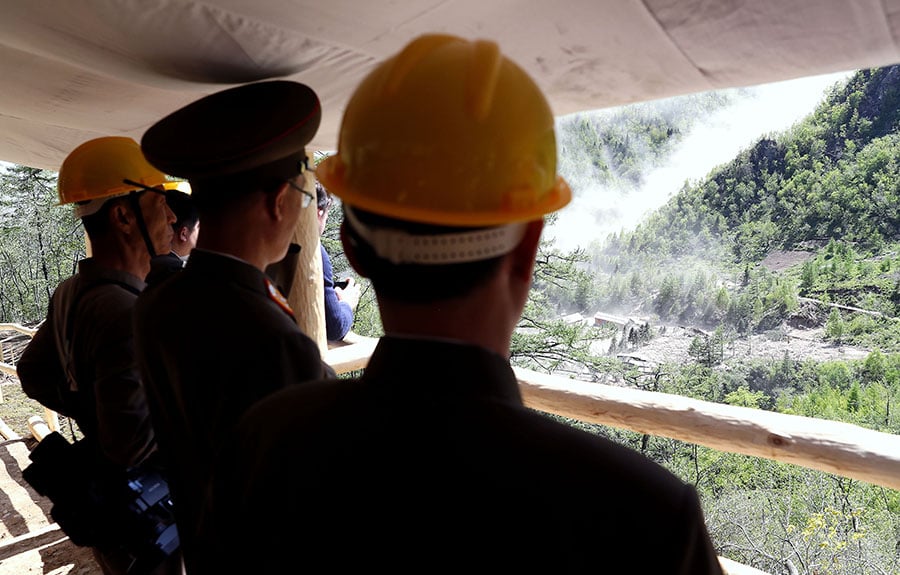 Less than 24 hours after his cancellation, and following a conciliatory public reaction from Pyongyang, Trump said that the two sides were talking, and summit planning resumed with both leaders signaling they wanted the meeting.
Less than 24 hours after his cancellation, and following a conciliatory public reaction from Pyongyang, Trump said that the two sides were talking, and summit planning resumed with both leaders signaling they wanted the meeting.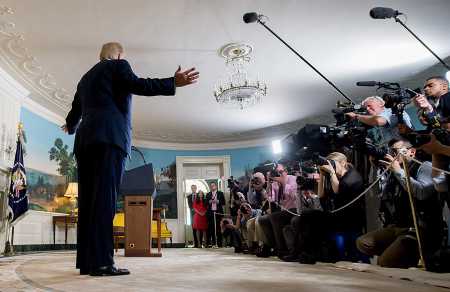 Trump said on May 8 that if he “allowed this deal to stand, there would soon be a nuclear arms race in the Middle East.” Trump said the process he initiated in January to work with European partners to “fix” the accord is not possible under the “decaying and rotten structure of the current agreement,” despite U.S. Secretary of State Mike Pompeo telling allies days before the announcement that he felt an agreement could be reached to address U.S. concerns. (
Trump said on May 8 that if he “allowed this deal to stand, there would soon be a nuclear arms race in the Middle East.” Trump said the process he initiated in January to work with European partners to “fix” the accord is not possible under the “decaying and rotten structure of the current agreement,” despite U.S. Secretary of State Mike Pompeo telling allies days before the announcement that he felt an agreement could be reached to address U.S. concerns. (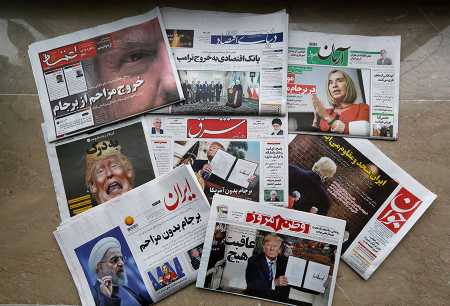 “The [deal], agreed to with Iran in 2015 and endorsed by the UN Security Council, is not perfect. It has, however, helped to curb a real threat to international peace and security. Canada regrets that the United States has decided to withdraw…particularly given that, according to the [International Atomic Energy Agency], Iran continues to implement its…commitments.”
“The [deal], agreed to with Iran in 2015 and endorsed by the UN Security Council, is not perfect. It has, however, helped to curb a real threat to international peace and security. Canada regrets that the United States has decided to withdraw…particularly given that, according to the [International Atomic Energy Agency], Iran continues to implement its…commitments.”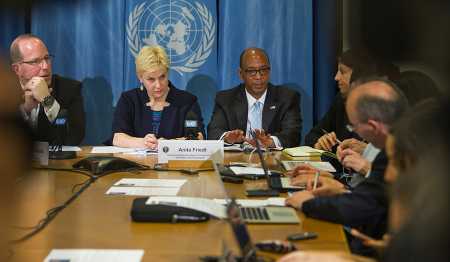 The Trump administration said that U.S. disarmament measures would depend on changes in the international security environment. A U.S. working paper, “Creating the Conditions for Nuclear Disarmament,” presented at the conference contends that the “easing of international tension,” “strengthening of trust,” and other specific conditions are prerequisites for progress on global disarmament.
The Trump administration said that U.S. disarmament measures would depend on changes in the international security environment. A U.S. working paper, “Creating the Conditions for Nuclear Disarmament,” presented at the conference contends that the “easing of international tension,” “strengthening of trust,” and other specific conditions are prerequisites for progress on global disarmament.